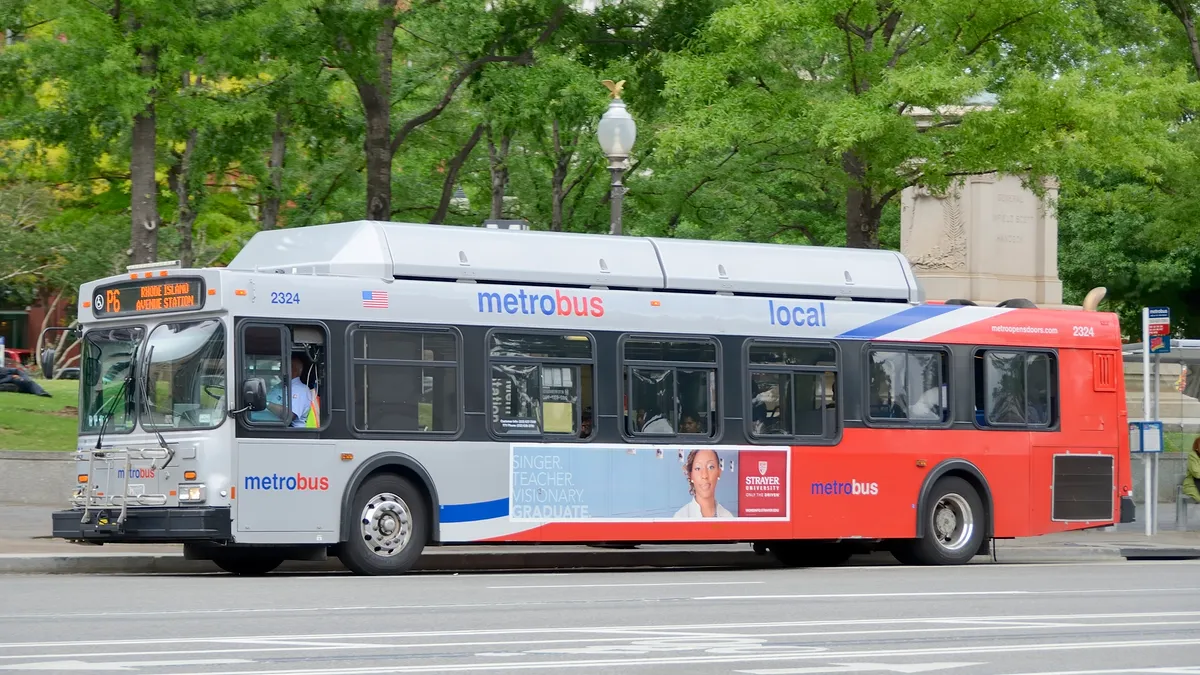Dive Brief:
- Priority lanes for transit buses, if kept clear, can be key to increasing equitable access to employment opportunities, said researchers behind a March study from the Urban Institute.
- The study, which focused on Washington, D.C., found that if priority bus lanes were clear 100% of the time, the average D.C. resident would see the number of jobs reachable within 30 minutes jump by about 90%.
- For a transit agency, clear bus lanes mean fewer buses are needed to serve the route, resulting in substantial cost savings, the researchers said.
Dive Insight:
The Urban Institute partnered with the Washington Metropolitan Area Transit Authority to look at current and proposed bus lanes, modeling different levels of enforcement to keep bus lanes clear. According to WMATA survey data, 46% of its bus riders have a household income below $30,000. Lower-paid workers often suffer higher unemployment rates and periods of joblessness, particularly in areas where job accessibility is low, the study says.
“The way that bus priority lanes enable greater access to job opportunities is by letting buses go faster in those lanes,” said Alena Stern, chief data scientist at the Urban Institute and lead author of the study. But a lot depends on whether, and how much, the bus lane is blocked, she said.
The study found that, even when buses are obstructed along just a quarter of their route, the number of additional accessible jobs drops to around 20,000, compared with the 40,000 additional jobs accessible in a 100% clear lane scenario.
However, there’s often government or community resistance to priority bus lanes. In the Bronx borough of New York City, local businesses and attractions opposed a dedicated busway along a major street, while in Florida, Gov. Ron DeSantis signed legislation this month that would make it more difficult for local governments to repurpose existing lanes.
That’s not the only issue. “There are some concerns that if we create a new punitive enforcement system, it could disproportionately affect people of color,” said Yonah Freemark, principal research associate at the Urban Institute and a researcher on the study. “Hopefully, you create a system where the enforcement is largely done by people themselves, that they can see very clearly that they're not supposed to go in that lane,” he said.
Well-enforced priority bus lanes could be cost-effective for the transit agency, the study found. Because open lanes allow buses to travel faster, “you actually would need fewer buses,” Freemark said. Although not all factors were considered in the study’s WMATA model, a bus lane that was clear 100% of the time could save the transit agency close to $200,000 per day.
Freemark cautioned, however, that “the likelihood of achieving 100% enforcement is low, unless the lanes are very well designed.” He recommended that bus lane enforcement coupled with increased bus frequency could lead to greater access to jobs.
“We hope that this research can help make the case for better-enforced priority lanes, [and] for increasing bus frequency, as some key tools to expand equity and access to employment opportunities,” Stern said.












